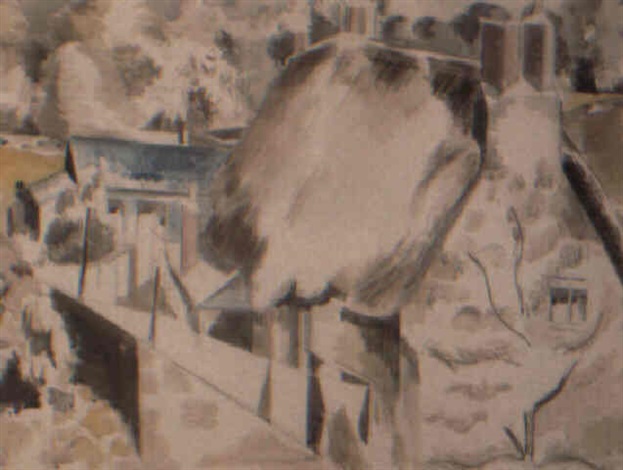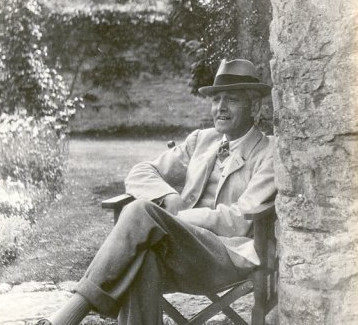
Dr. Percy Withers (1867-1945) is said to have had a wonderful skill with keeping friendships, but this is likely due to his welcoming hospitality of visitors at his Lake District and Oxford homes, and for keeping up with correspondence. His popularity is visible in the pages of his visitors book, aptly called ‘A Paradise of Dainty Devices‘, titled after the Richard Edwardes poem. It was kept for the visitors of his home near Oxford, Souldern Court and later, Epwell Mill in Warwickshire.
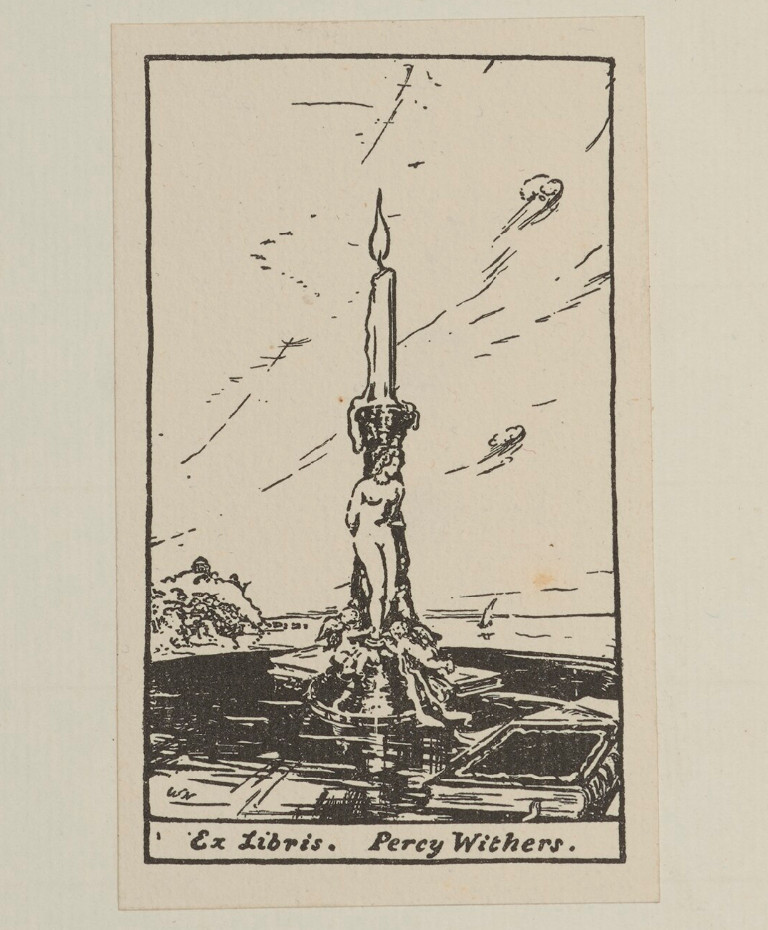
The leather bound book contains handwritten contributions from poets such as A.E. Housman, W.B. Yeats, and Robert Bridges, alongside cartoon sketches by Max Beerbohm and William Rothenstein; watercolours by artists including Edward Vulliamy and most surprisingly Paul Nash and John Nash. Although most of the poems have been published elsewhere, the sketches and paintings are unique. The visitors book was donated to Somerville College, Oxon, by Audrey Withers, an alumni in 1976.
Withers was a physician and writer. He also gave lectures to many societies of his trips and travels, he also wrote books on a vast range of topics, from: Egyptology, Cumberland, and childrens verse, to his most known work, the biography of his friend A. E. Housman.
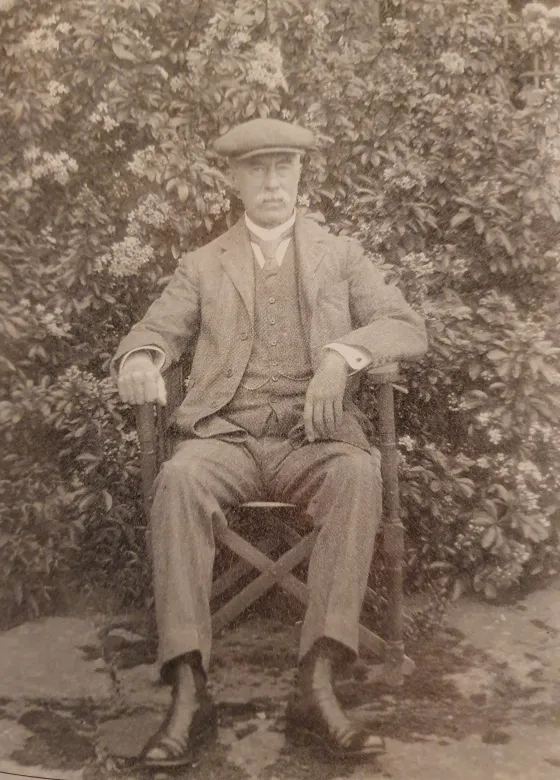
Withers was transferred to the National Service Board (Conscription) in Cambridge in the early summer of 1917 and Housman was the Kennedy Professor of Latin at Trinity College, it was at this time the men met and became friends. In the years after the war, Housman was a guest at Souldern Court. After Housman’s death in 1935, Withers wrote a biography of his friend, A Buried Life: Personal Recollections of A. E. Housman (1940) reviewed by Archie Burnett as “a sympathetic but somewhat baffled memoir”.
The pages below are all from the visitors book of Souldern Court, and it is the guests of Withers there, that make up this blog.
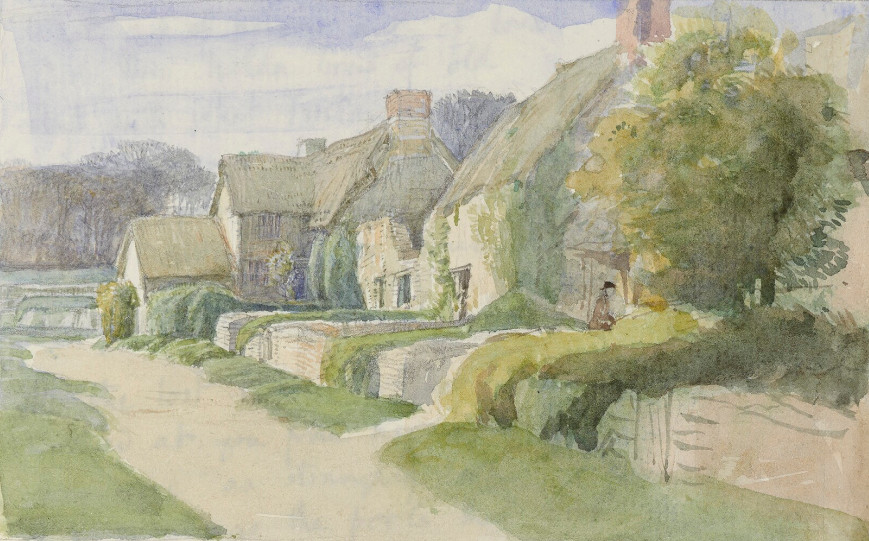
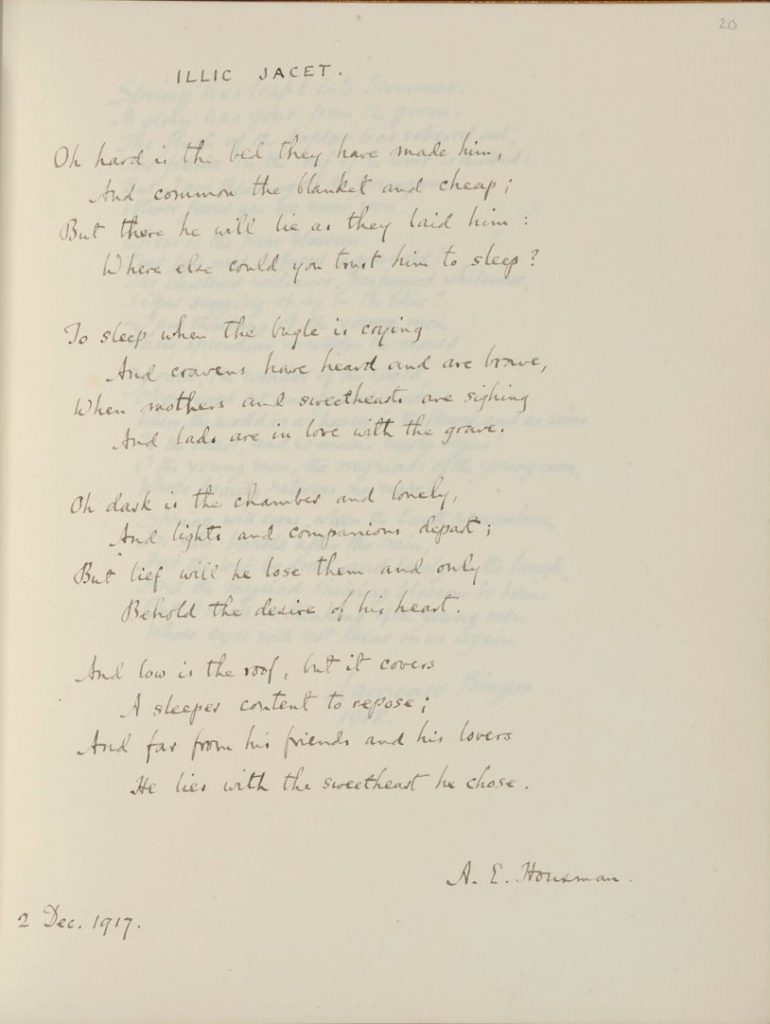
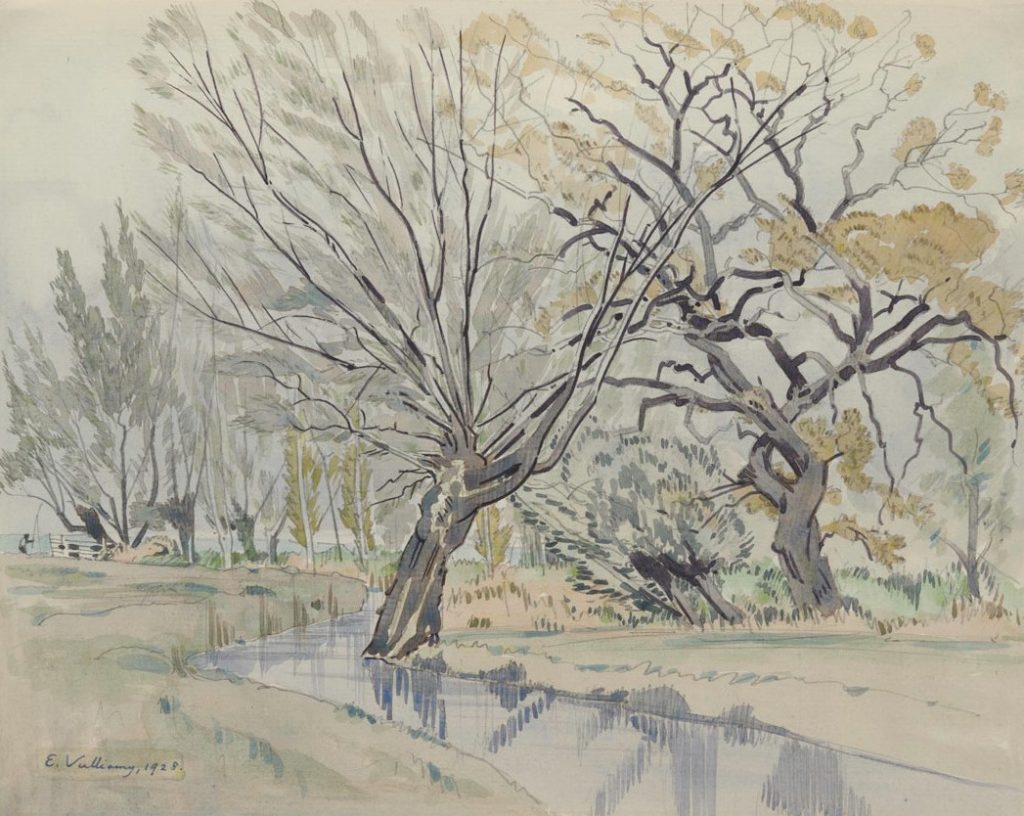
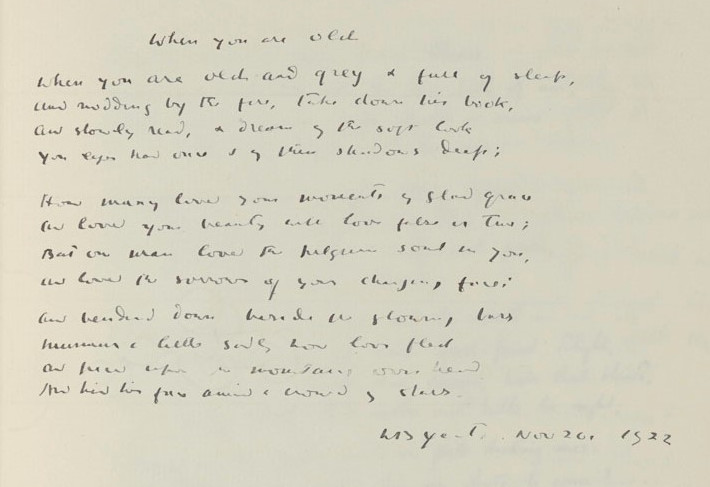
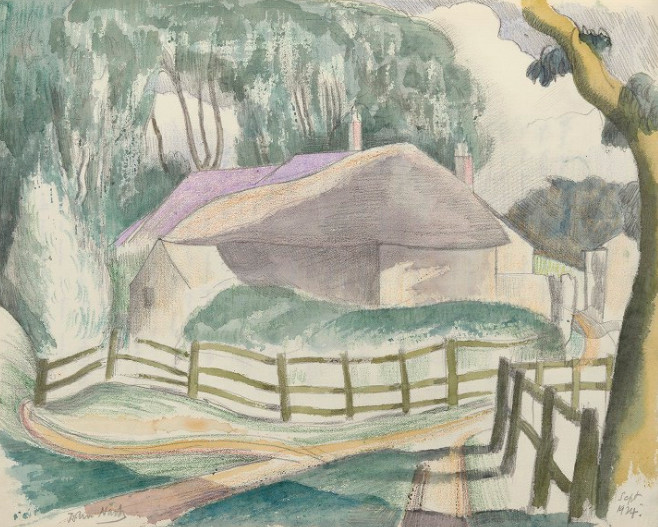
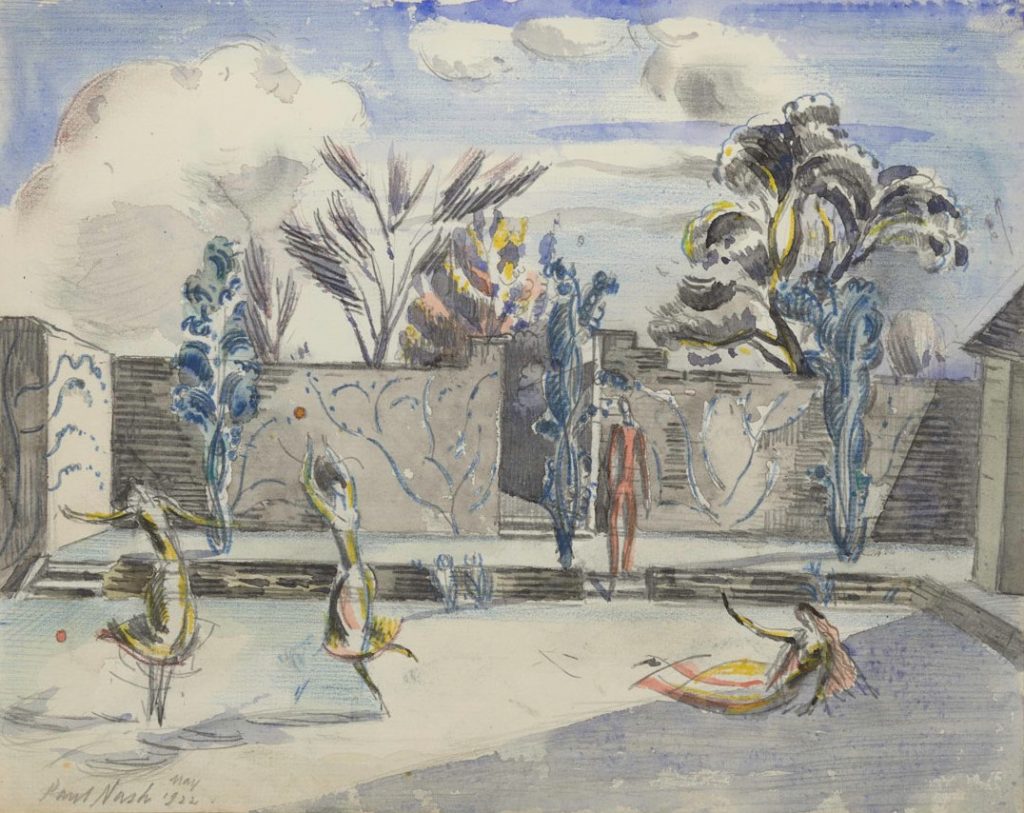
The view Nash painted is likely of the garden at Souldern Court. It is likely that the tennis court at the property now, existed in Nash’s time.
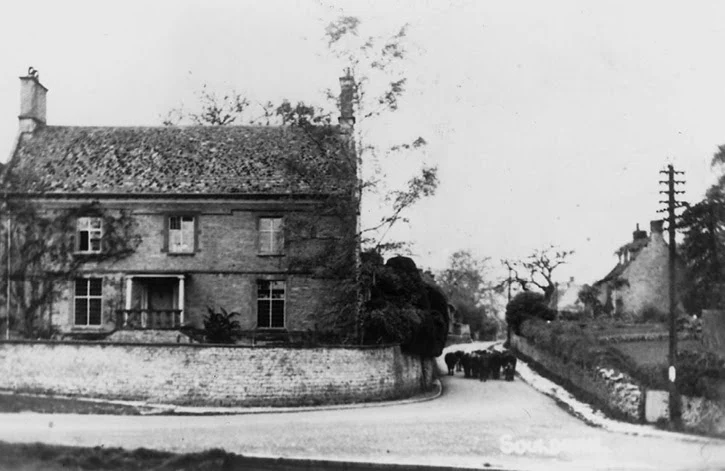
Percy Withers asked Paul Nash for four watercolours of the house and village, they were Nash’s first commision. Nash looks to have painted the works in oil but he only returned three works out of the four.
The painting below, is the view over the road from Souldern Court. The elevated angle of the work show Nash must have painted it from his bedroom window as it is before he started to use photography as an aide memoire.
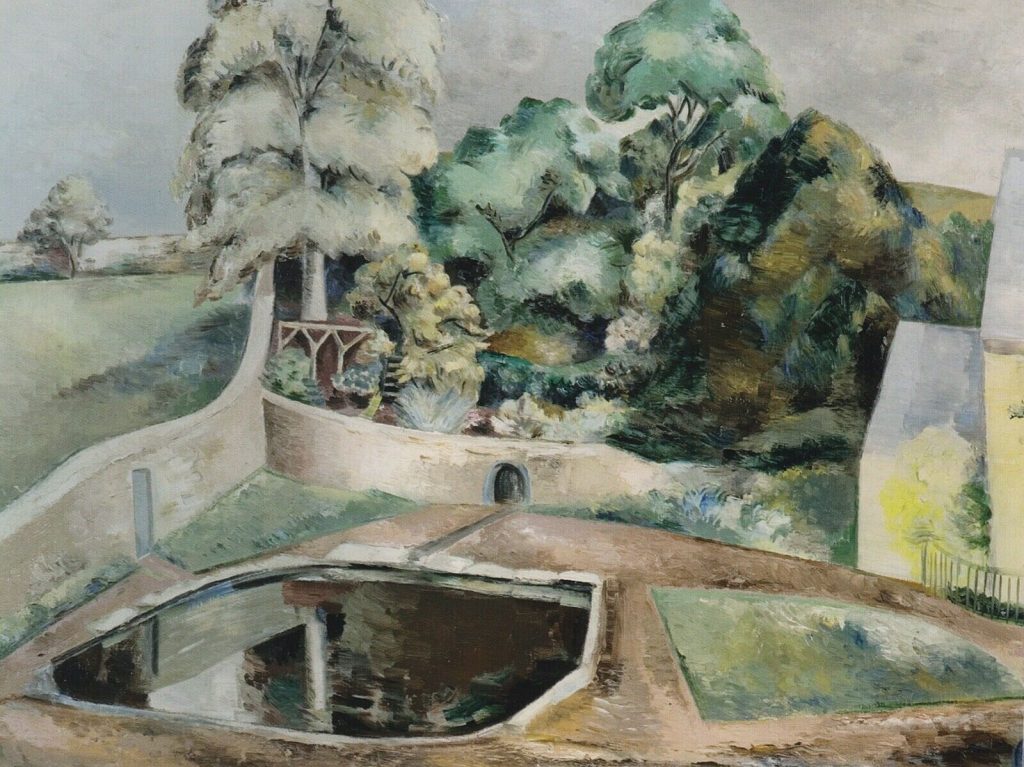
SOULDERN or “SULTHORN” as it was originally called was founded before Roman times — it lies between the flood plain of the River Cherwell and the upland of the Great Oolite, from which limestone water percolates down to emerge as excellent springs. One of these may be seen as Souldern pond, old name — Town Well. A photograph taken in 1905 is shown (below).
http://www.souldern.org/history/
The oil painting of the pond at Souldern, and below is the photograph. I am delighted to say the village scene looks the same today.
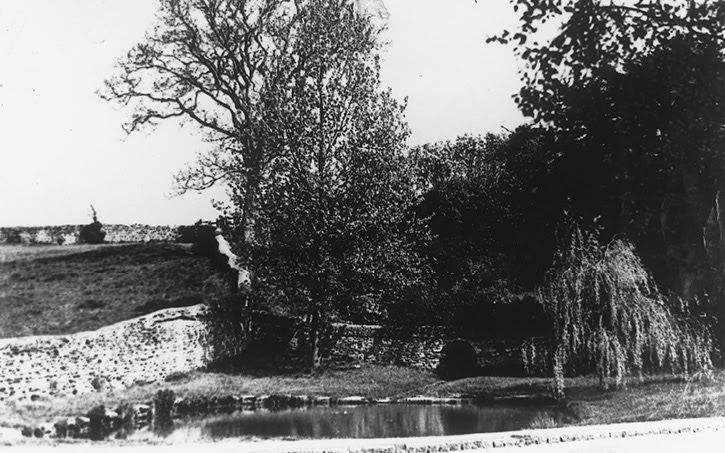
In 1923 Paul Nash also made a wood engraving of the view and called it Hanging Garden, it was editioned in 1924.
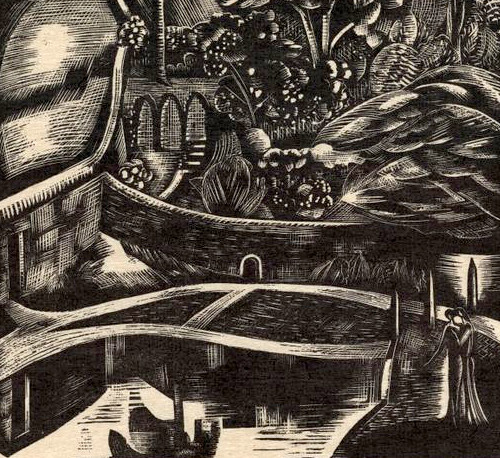
Hanging Garden, 1924 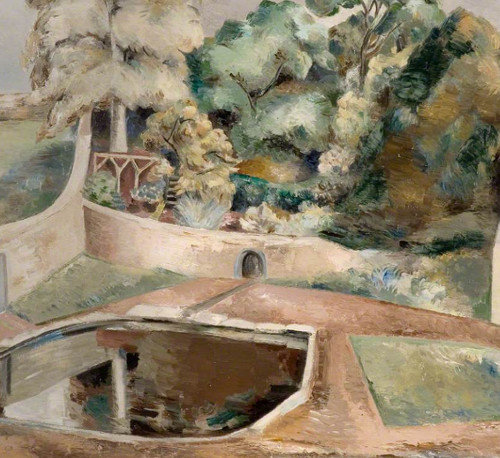
Pond at Souldern, 1923
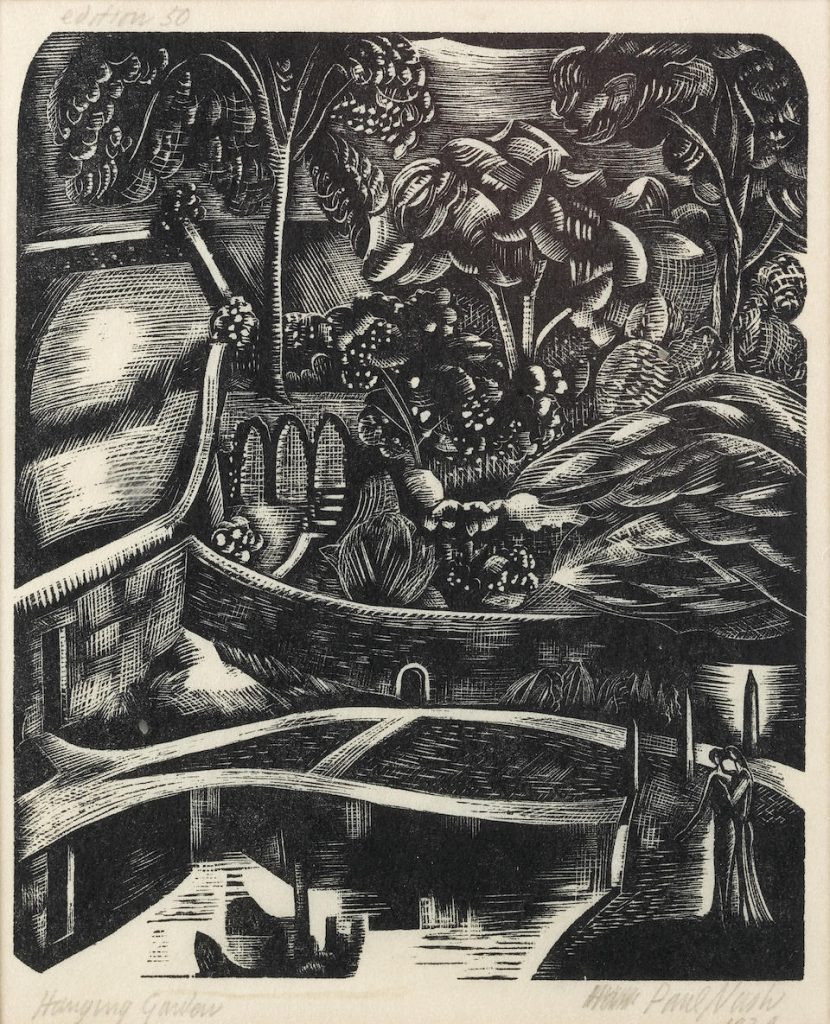
Below is one of the other paintings from the village, though even with those iconic windows, I can’t trace the buildings location.
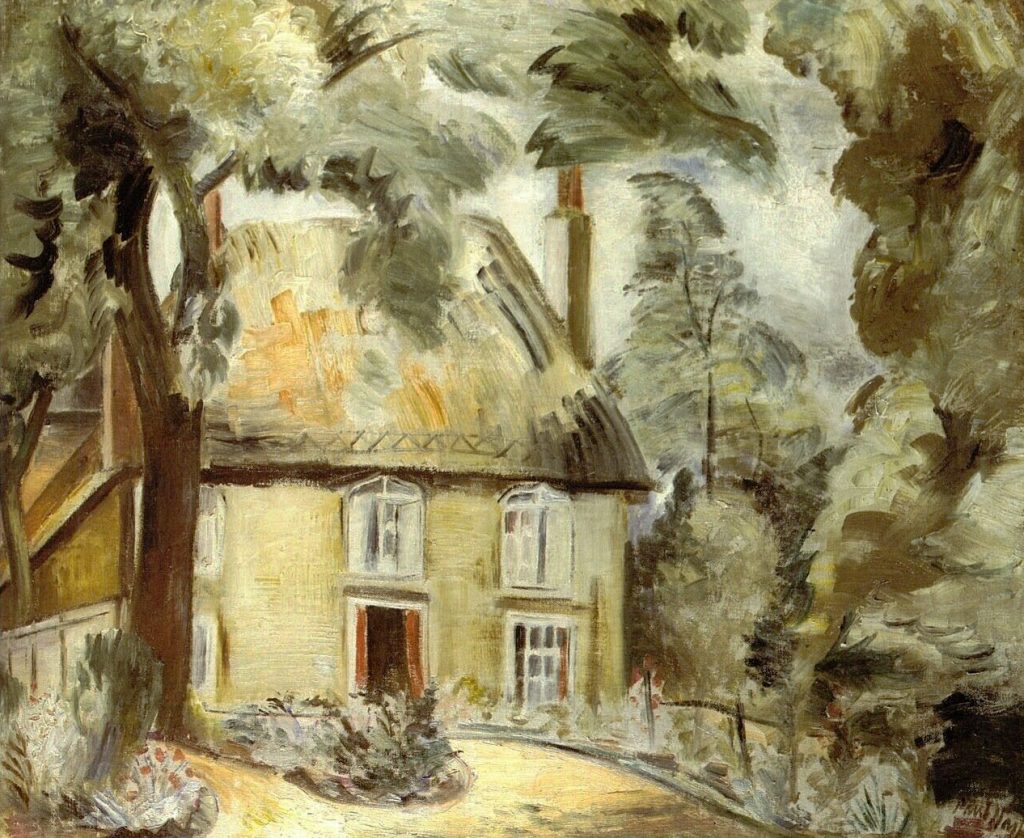
Below is a watercolour painting by Paul Nash of Cottages in the area. However the photograph comes from the 1995 auction guide and is as clear as I can make it. Another painting called The Walnut Tree (1923), a watercolour was sold in 1989 but last exhibited in 1975 at the Tate Gallery Retrospective of Paul Nash.
